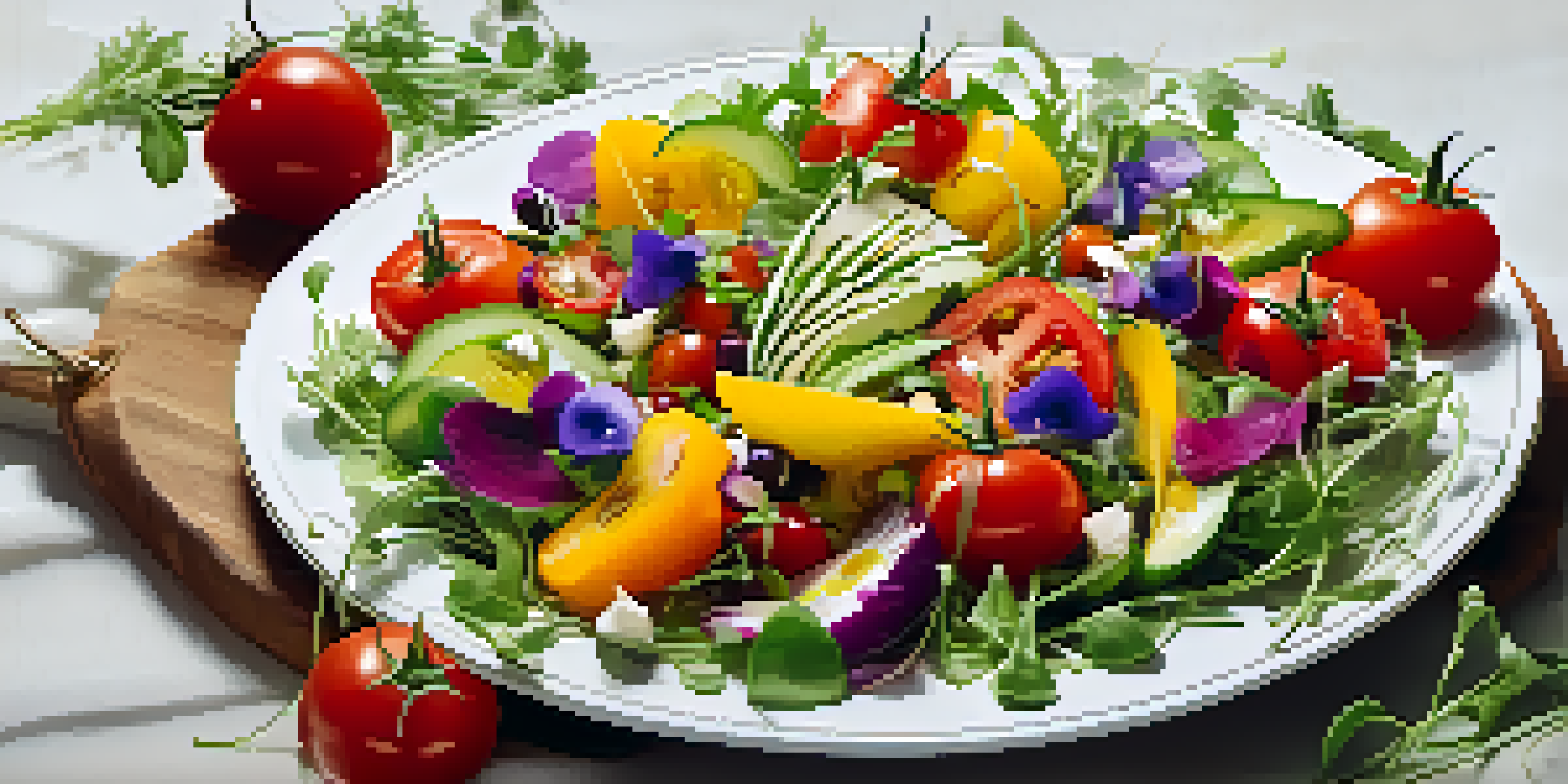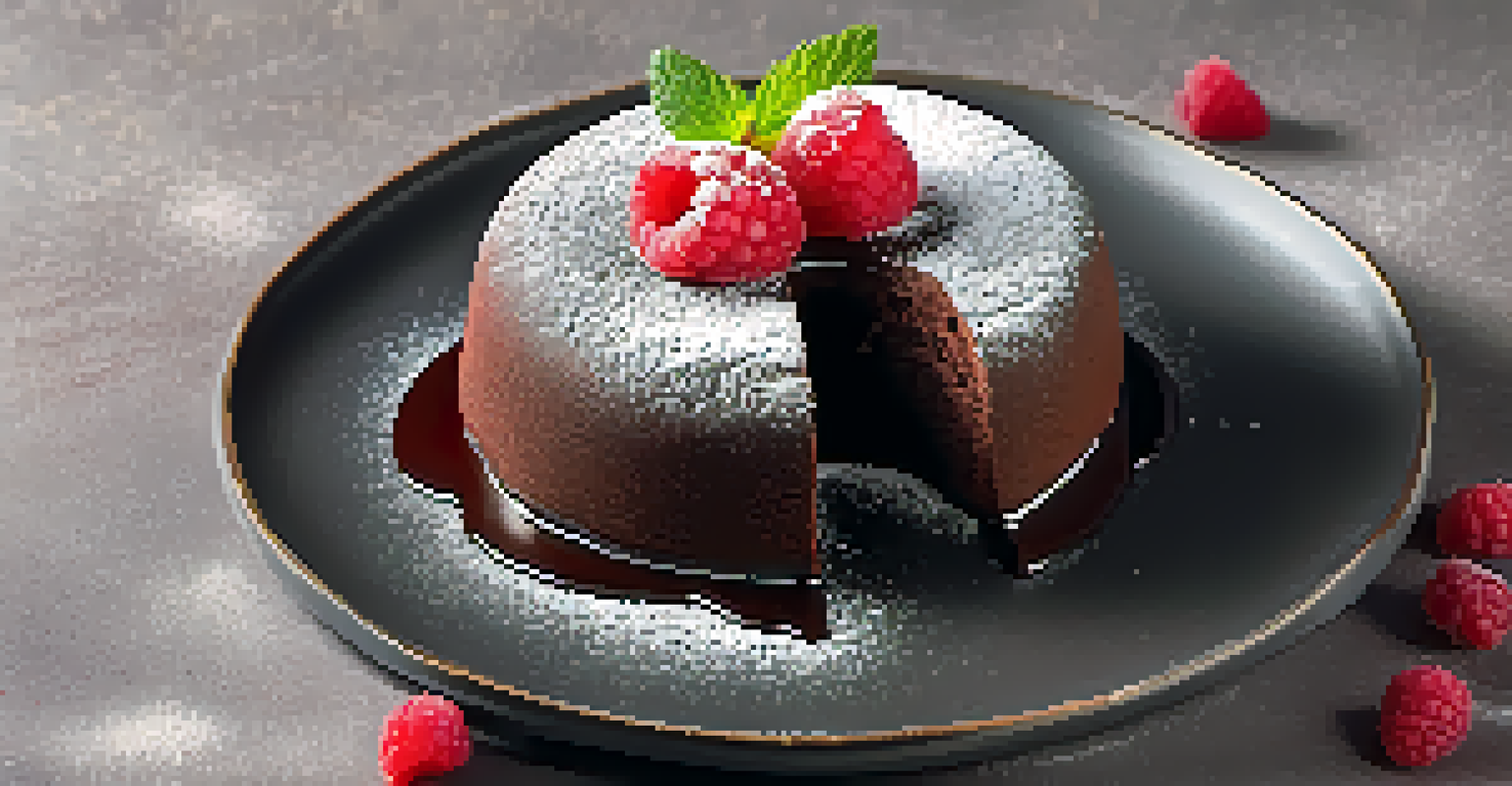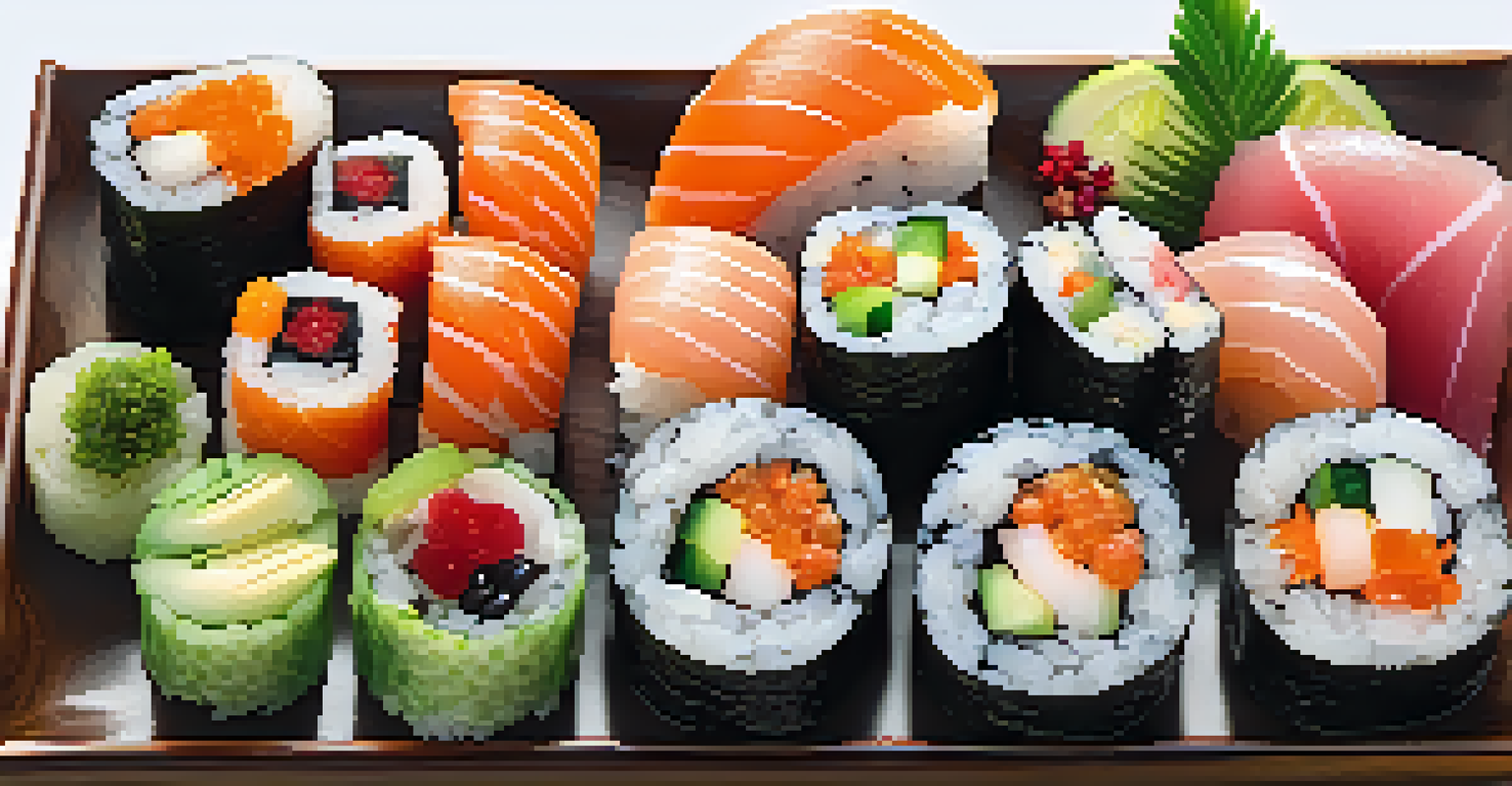Food as Art: Understanding Culinary Aesthetics and Techniques

What is Culinary Aesthetics and Why Does it Matter?
Culinary aesthetics is the art of making food visually appealing. Just like a painter chooses colors and shapes to express emotions, chefs use ingredients and plating techniques to create visual masterpieces on a plate.
Food is the most primitive form of comfort.
This aesthetic value isn't just for show; it enhances the dining experience. When a dish looks beautiful, it sets the expectation for taste and heightens the overall enjoyment of the meal.
Moreover, culinary aesthetics can reflect cultural stories and individual creativity, making each dish a unique expression of the chef's vision and heritage.
The Role of Color in Culinary Presentation
Color plays a pivotal role in food presentation, influencing our perception of taste and freshness. A vibrant plate filled with greens, reds, and yellows can evoke feelings of joy and appetite.

For instance, a colorful salad with various vegetables not only looks appealing but also suggests a range of flavors. Just like a well-composed painting, the right balance of colors can captivate the diner’s attention.
Culinary Aesthetics Enhance Dining
The visual appeal of food significantly enhances the overall dining experience by setting expectations for taste.
Chefs often use complementary colors to create a striking visual impact, making the meal not just food but a feast for the eyes.
Textures and Their Impact on Food Experience
Texture is another crucial element of culinary aesthetics. The contrast between crispy, creamy, and tender components in a dish can enhance the overall experience, engaging multiple senses.
The only thing I like better than talking about food is eating.
Take a classic dish like a chocolate lava cake; the smooth, rich chocolate interior paired with a crunchy exterior creates a delightful experience that keeps diners coming back for more.
By thoughtfully incorporating various textures, chefs can elevate a simple meal into a multi-sensory experience that resonates long after the last bite.
Plating Techniques: The Canvas for Culinary Art
Plating is where the magic of culinary aesthetics truly comes alive. It’s akin to an artist adding finishing touches to a canvas, where the arrangement of food can either enhance or detract from the dish’s appeal.
Techniques like stacking, drizzling sauces, or adding garnishes can transform a simple dish into an exquisite presentation. For example, a well-stacked burger can invite curiosity and appetite, while a sloppily plated one may do the opposite.
Color and Texture Engage Senses
The use of vibrant colors and varied textures in food presentation captivates diners and elevates their enjoyment.
Chefs often practice various plating styles to find their unique voice, making each dish a signature expression of their culinary artistry.
The Influence of Culture on Culinary Aesthetics
Culinary aesthetics are deeply rooted in cultural traditions. Different cultures have distinctive ways of presenting food, influenced by history, geography, and local ingredients.
For example, Japanese cuisine emphasizes simplicity and seasonal beauty, often showcasing the natural colors and shapes of ingredients. This approach creates a calm and meditative dining experience.
Understanding these cultural nuances allows diners to appreciate not only the flavors but also the stories behind each dish, enriching the entire culinary experience.
Innovative Techniques: Molecular Gastronomy and Beyond
Molecular gastronomy is a fascinating trend that merges culinary art with science. It involves using innovative techniques to manipulate food textures and flavors, creating visually stunning dishes.
Think of dishes that feature edible spheres that burst with flavor or foams that add an unexpected twist to familiar tastes. These techniques challenge traditional ideas of food presentation and push the boundaries of culinary creativity.
Cultural Influences Shape Presentation
Culinary aesthetics are deeply rooted in cultural traditions, enriching the dining experience through unique stories and styles.
While some may see this as a departure from classic cooking, it opens up a whole new realm of possibilities for chefs and diners alike, proving that food can indeed be art.
The Importance of Context in Culinary Art
Context matters greatly in how food is perceived and enjoyed. The environment, presentation, and even the company we share at the table can enhance the aesthetic experience.
For instance, a beautifully plated meal served in a cozy, well-decorated restaurant can become a cherished memory, while the same dish may feel different when eaten hurriedly at home.

This interplay between food, setting, and social interaction highlights the multifaceted nature of culinary aesthetics, reminding us that dining is not just about nourishment but about creating moments.
Conclusion: Food as a Fusion of Art and Experience
In conclusion, culinary aesthetics are a vital part of our dining experiences, intertwining visual appeal with flavor and context. The artistry involved in food preparation and presentation can transform meals into memorable events.
Whether through vibrant colors, diverse textures, or innovative techniques, chefs have the power to create dishes that are true works of art. It’s a celebration of creativity that invites us to savor not just the taste, but the experience as a whole.
As we continue to explore and appreciate food as art, we foster a deeper connection to the culinary world and the stories it tells.